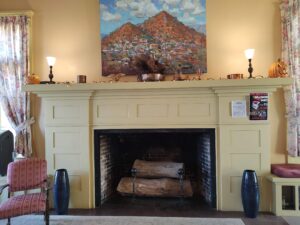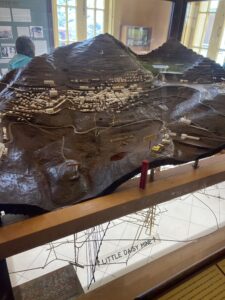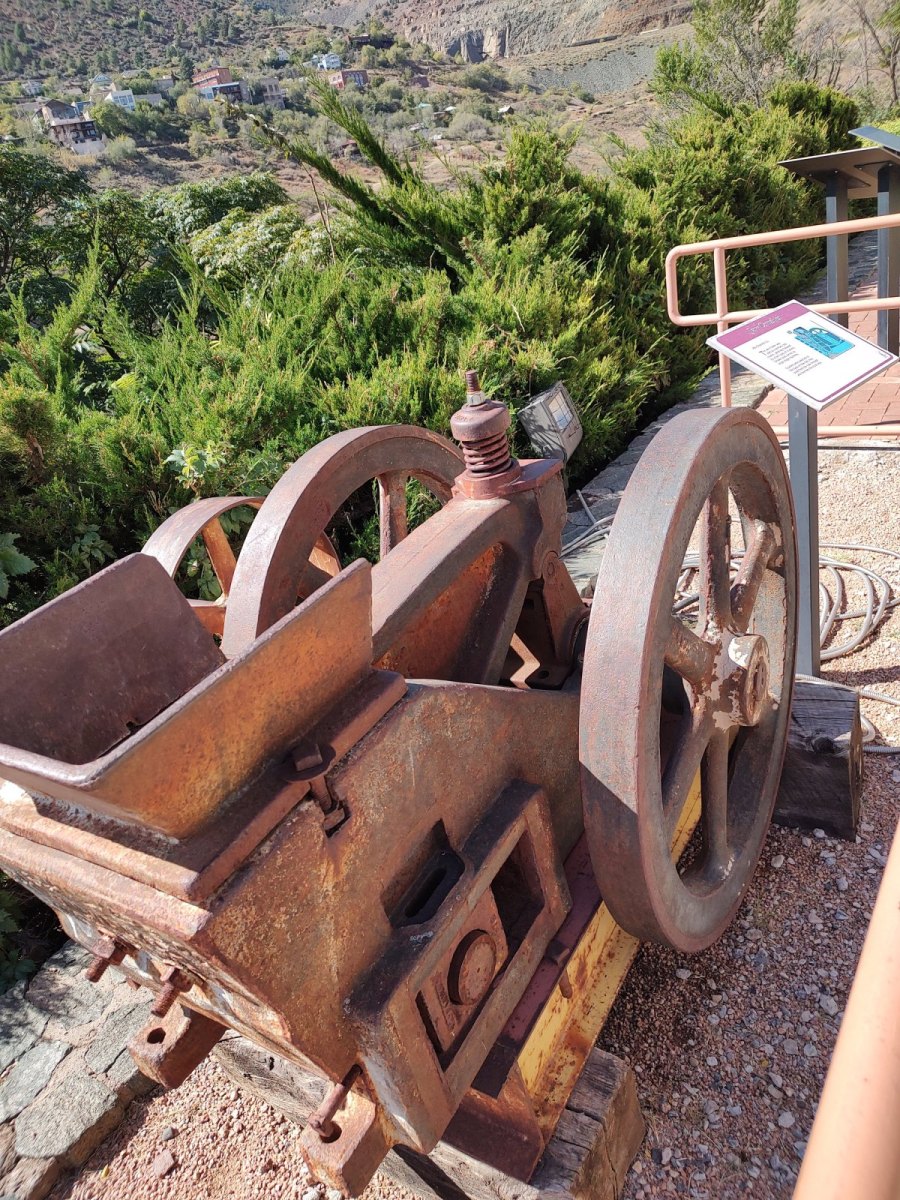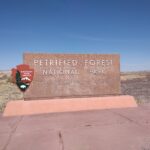During the 1950s, it was decided that the story of the mining town of Jerome needed to be told to the world. While Jerome had great success, it also persevered through great hardships. Fires, collapses, landslides, and economics were all things that had brought Jerome to its knees on many occasions. Yet, Jerome still stands in all its glory, nestled into the side of a mountain, in central Arizona. It’s the town in the cliffs, seen from the city of Cottonwood and Clarkdale below. It was decided that building a state park, that could tell its history, would be the best way to showcase Jerome to anyone that decided to visit. In 1965, The Jerome State Historic Park was dedicated and opened for business.
A Mansion on a Hill

In 1916 James Douglas, also known as “Rawhide Jimmy,” built his mansion on a hill overlooking his Little Daisy mine near Jerome. Douglas purchased his mine in 1912 and by 1916 owned 2 mines. His mining operation peaked in 1929, before a combination of the Great Depression and poor ore quality began to erode profits, causing him to shut down the operation by 1938. The mansion Douglas built was to serve as a residence and also a sort of hotel for other mining officials. Along with the mansion, Douglas also built The Little Daisy hotel near the mine itself for mine workers to stay. Today, the Little Daisy Hotel still stands and welcomes visitors to come and enjoy its wonderous views and elegant charm.
In 1962 James Douglas’ sons, Lewis and James, finished their negotiations with the Park Board and the Park was granted nearly 2.5 acres, including the mansion, for purposes of building the state park. Renovations ensued, and much of the home was turned into a museum for displaying history and facts about the mining era of Jerome, as well as preserving the home itself. Rooms such as the wine cellar, Billiards room, bedrooms, and living room, remain intact, and also serve as places for visitors to learn about Jerome. The mansion itself is now the Visitor Center for the park, and the original living room serves as the main lobby for the Visitor Center. Even the original fireplace still stands in the main lobby of the visitor center, in all its beauty.
The Largest Standing Wooden Headframe in Arizona

The old Little Daisy mine is the first thing to greet you, as you drive up to the Jerome State Historic Park. Standing tall against the mountainous background, the Headframe for the mine stands as a welcome to those entering the park. All inside a large chain-link surrounding, visitors can step inside the old elevator, and even look down into the 1900 foot mine shaft, through a glass floor that you stand on. It’s an unsettling feeling looking down into the darkness and know that 1300 feet below is a water table that is still some 600 feet above the bottom. Don’t break that glass!! Also in this area are original carts, tools, and pumps, used during the mining operation. Some tools were to keep water from overcoming the men below and some to carry materials through the mine and across the surface.
Altogether, three shafts are present at this location. All of the shafts are connected by crosscut shafts at one hundred feet intervals. The three shafts are The Audrey Shaft, The Edith Shaft, and The Daisy Shaft. The Audrey Shaft was used to carry ore through all of its 3 segments. The Edith Shaft was used to carry equipment and mine workers. It lies to the west of the Audrey. The Daisy Shaft lies a bit further away and uphill from the former. It was a ventilation shaft for the mine and aided in helping the mine keep its air moving and clean.
Up the Hill and Inside the Park
The drive into the park is short and once you enter the gates; you simply travel up a short hill and park at the Visitor Center. Take a moment to admire the view of the mountains across the valley below. It’s no wonder why James Douglas chose this hilltop to place his home. Standing alongside the fence, and looking across, you could almost hear the historical noises that would have been happening, over one hundred years earlier. Metals clanking, explosions from below, pack mules, trains, trolly carts wheels squeaking, and the sounds of working men would have been a constant from this location.
Around the outside of the Park Visitor Center, you can see history on display, in the form of old tools, innovative drilling apparatus, buggies, old trolly cars, gigantic water and air pumps, and signs of hard work all line the edge of the premises. The old carriage house still holds horse drawn buggies that were used in the time.

Once inside the visitor center, you are greeted by a friendly customer service agent, who will give you any information you need. As we entered, we were told that a short film was just starting down the hallway, and it would give us the unusual story on the town above us and its mining history. We rushed in and sat for the fifteen-minute-long film. The film was wonderful and shed light on everything we were seeing. It gave us insight on the many fires that plagued the town above, and how the success of the mining operation kept the town rebuilding.
There are several rooms inside the center. Inside many of the rooms are glass displays that contain artifacts from the past life of Jerome and the mansion you are in. You can read stories of the life of the people that built Jerome, see original items, like Fire Department gear, and see samples of the gold, silver, and copper ore that once caused Jerome to boast itself as the 3rd largest town in the state. On display is also a complete model of the area, that includes 3d models of the numerous shafts and ore deposits below. Its quite a display and worth taking a few minutes to admire.
A Must-See Stop
The Jerome State Historic Park is a must-see stop for anyone wanting to understand why Jerome stands as the beautiful tourist town it is today. Just knowing Jerome is a mining town, isn’t enough to understand the strife it endured through its many years. To fully appreciate the history of this area, including the towns below of Cottonwood and Clarkdale, you need to understand how Jerome came to be. The State Historic Park does just that. Once you leave the park, head on up the hill to Jerome, look out and enjoy the splendor of the location on the mountain, and do some shopping in the buildings that still remain as living history.

